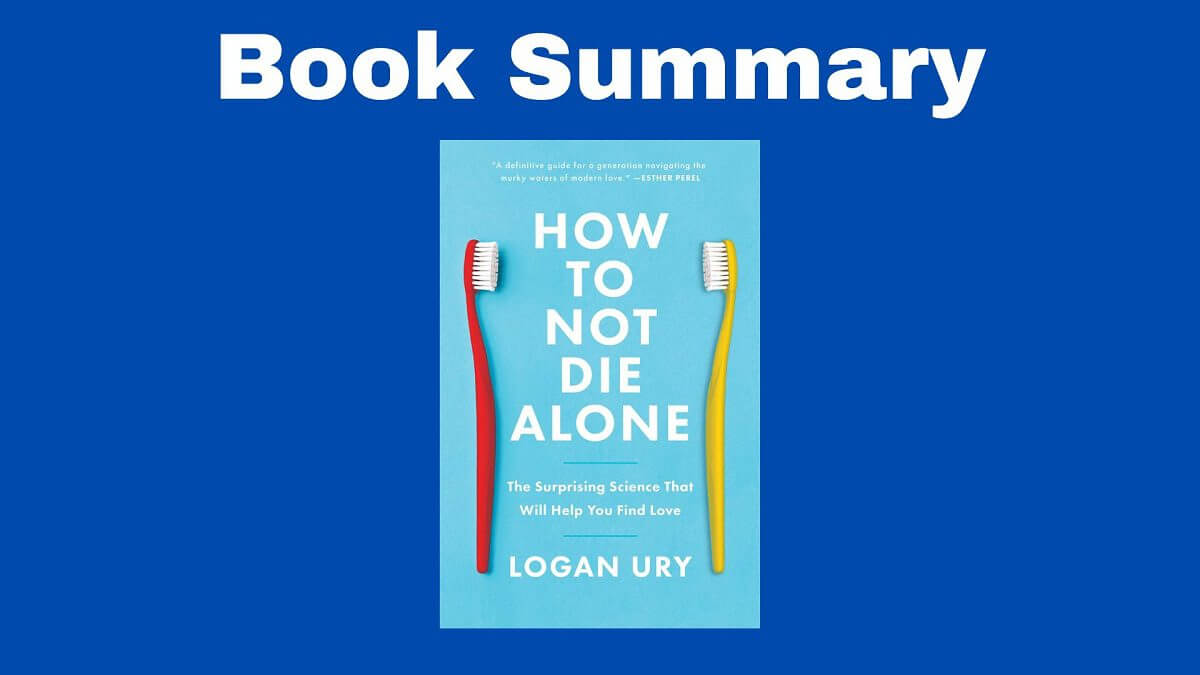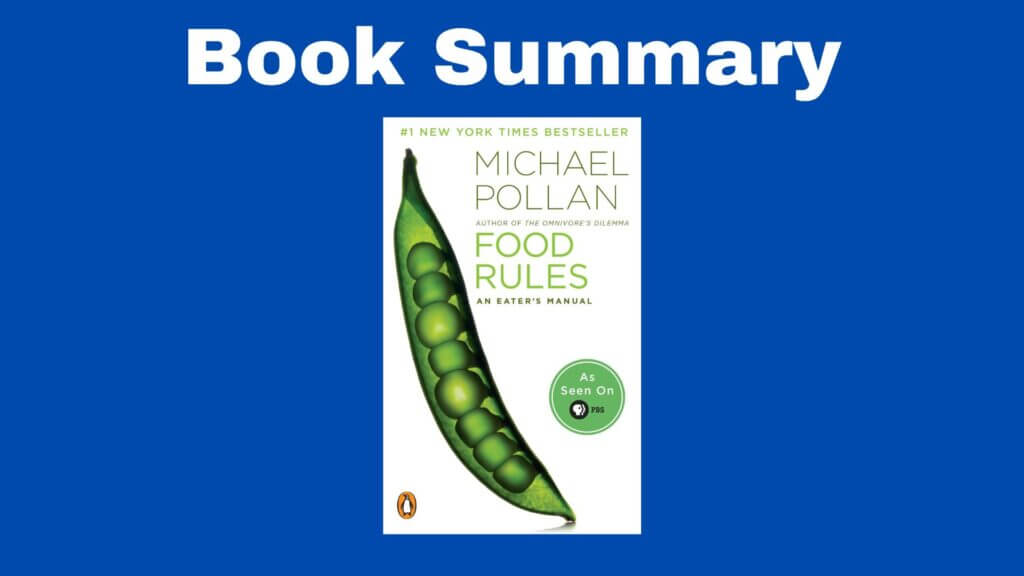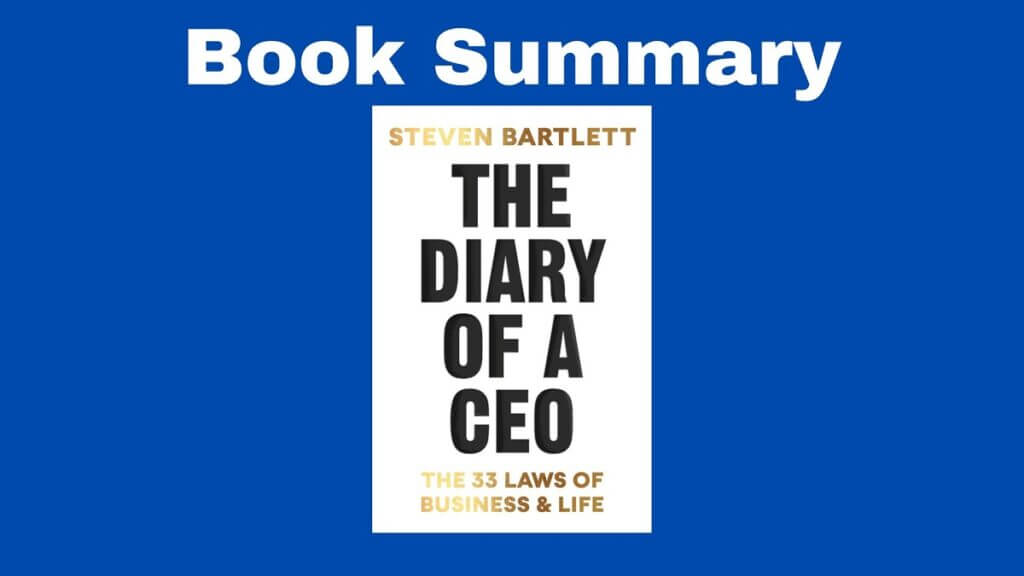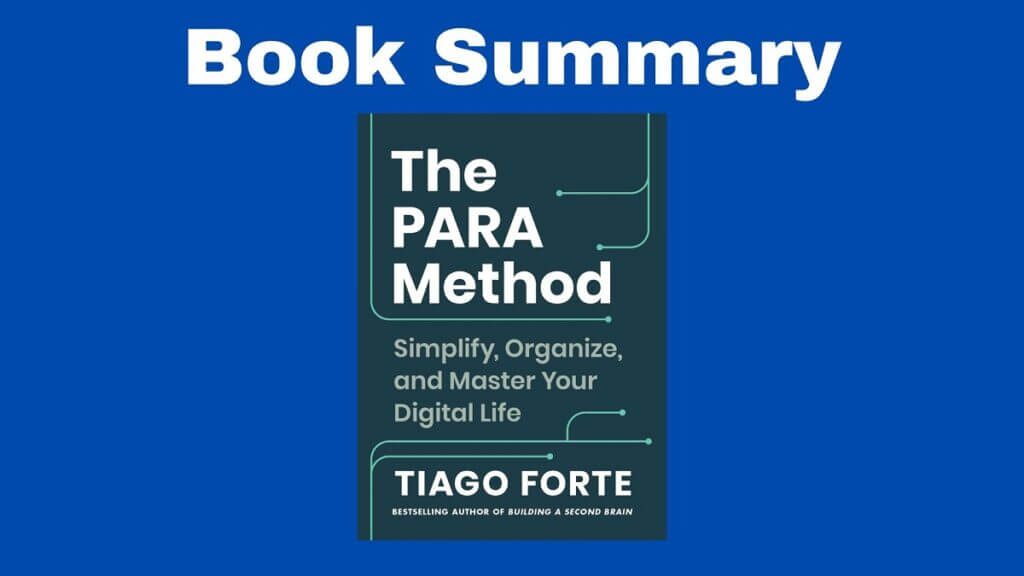The Book in Three Sentences
In this summary of How to Not Die Alone, you’ll learn that great relationships are the result of a series of good decisions and not something that happens by itself. By using principles from behavioral science Logan Ury teaches you to break bad patterns, identify what matters in an ideal partner, and meet people in real life. How to Not Die Alone is all about finding, building, and keeping, the relationship you want.
How to Not Die Alone Summary
Introduction
Love is a natural instinct, but dating isn’t. This book’s author is a dating coach and matchmaker who studied psychology at Harvard. She developed a psychology she calls intentional love which encourages you to see your love life as events rather than accidents. To have a great relationship, you must build one, not discover it.
Behavioral science studies how we make decisions. It says we’re irrational, but our irrationality isn’t random, it moves in predictable ways. You shouldn’t turn into a computer that finds soulmates. Instead, you should look for the things that are holding you back when it comes to love.
Section 1: Getting Ready
Chapter 1: Why Dating Is Harder Now than Ever Before
Dating has never been more difficult. Nowadays, we have the freedom to pick our identity, which includes religion, community, and social class. The price for freedom is uncertainty. One such decision is who to choose as our romantic partner. Dating has become a cultural experiment and we have a seemingly endless number of potential partners. People want options, but having too many options creates the paradox of choice, a phenomenon that makes us unhappy and uncertain.
The internet gives us certainty because we can look up whatever we want, whenever we want. We demand the same kind of assurance for relationships, but that doesn’t exist. You’ll never find those answers in Google searches, so we must build great relationships instead. But that’s not the only problem we face. Social media creates the illusion that everyone’s relationship is perfect except ours. Most people who get married eventually get divorced and some of the couples who stay together are miserable. To build fulfilling relationships, we need good role models, but most people didn’t have them growing up. Having so many options overwhelms us and on top of that, everyone wants to get the decision right.
Those are the problems we face. As a solution, we must understand ourselves and behavioral science can help us.
Chapter 2: The Three Dating Tendencies
Most people who haven’t found love suffer from dating blindspots. These are the behaviors that hold you back in the dating world and you can’t identify yourself. The most common blindspots belong to what the author calls, the three dating tendencies. Through a series of questions, you can find out if you’re a romanticizer, a maximizer, or a hesitator.
- The romanticizer is into love and wants to find a soulmate
- The maximizer does research and will only settle when they find the “right one”
- The hesitator wants to work on themselves before they’re ready to date
All of these have one thing in common, unrealistic expectations. The romanticizer expects too much of relationships, the maximizer expects too much of their partner, and the hesitator expects too much of themselves.
Chapter 3: Disney Lied to Us
Romanticizers want to live in a fairy tale. For them, love is something that happens. The perfect person is out there and you’ll meet them one day. Once the person shows up, love will be easy. According to behavioral science, our mindset matters because our beliefs determine the context in which our experiences will take place. This also influences the decisions we take.
People have two mindsets: a soulmate mindset is the belief that the relationship fulfills us when we’ve found the right person. A work-it-out mindset is the idea that the relationship succeeds because we’ve put effort into it.
Romanticizers belong to the soulmate mindset which means that they wait for someone and expect everything from that person. Also, they have a perfect picture of that person and they won’t give anyone else a chance. When a romanticizer meets someone they like and starts dating, they give up when the first obstacle happens.
People who belong to the work-it-out mindset believe that love requires effort. But love is an action, not something that just happens. This makes them less likely to give up when a heated discussion takes place.
We must resist the ideals of romanticism, such as:
- The idea of finding a soulmate: remember that there’s no such thing as perfect
- Once you found love, everything else will be easy: the author refers to this as the happily-ever-after fallacy. All relationships require effort
- Love will find you and it’ll happen in a meet-cute way: love requires effort to find it and sustain it. It doesn’t matter how you met your significant other, it matters that you created a life together
- Social media perpetuates the idea that relationships are easy: keep working hard and ignore the Facebook posts
Chapter 4: Don’t Let Perfect Be the Enemy of Great
Maximizers want to make the best decision. They’re similar to perfectionists in the sense that they want to explore all options before making a decision. The more options available, the more daunting it seems. The opposite of maximizers are satisficers, who aren’t worried about better options. They are fine with good enough and they’re happy making a decision after gathering enough evidence.
Maximizers believe that carefully studying all options will improve their life. But this isn’t true. Satisficers make good decisions and are happy too. Satisficers don’t always settle and they have high standards too. The difference is that they simply don’t care about exploring all options. Regarding relationships, it’s better to be a satisficer because maximizing involves anguish, spending too much time making decisions, and feeling like you missed opportunities. The truth is, there’s no right answer for who to marry.
Ironically, when satisficers choose worse options, they feel happier with the options they have. Maximizers, on the other hand, second-guess themselves which means they suffer doubly: before making a decision and whenever they think they’ve made the wrong one. So it isn’t about the quality of the decision, it’s about the feelings that result from such decisions. Your goal shouldn’t be to make the best decision but to be happy.
Maximizers evaluate each option before making a decision. But when you make a decision, your brain will rationalize it as the right one. Rationalization is an ability that convinces us we picked the right thing. Maximizers can become satisficers by analyzing the secretary problem. The riddle puts you in the shoes of someone who’s hiring a secretary. According to science, you must interview thirty-seven percent of people and select someone. That becomes your benchmark. You should hire the next candidate that’s better than that benchmark. You can use this exercise in the dating world in a similar fashion. Once you have enough data, pick a benchmark and when you meet someone as good or better as that person, commit to them.
Chapter 5: Don’t Wait, Date
Hesitators are people who don’t think they’re ready for a relationship and they are always coming up with excuses. Fear paralyzes them so they avoid dating altogether. There’s a big opportunity cost when you choose one option over another. Hesitators ignore dating until something happens, but there’s a cost for not starting. They lose the opportunity to learn about dating. Dating helps you overcome the intention-action gap. This is the gap between wanting to do something, and not taking measures to achieve it.
Behavioral science suggests some steps to help us.
- Make a deadline: have a short, concrete deadline to motivate yourself
- Prepare: download apps, prepare outfits, practice listening, and take some good pictures for your profile
- Tell others: when you announce something publicly, you’re more likely to carry it out
- Commit to your new identity: by reinforcing a new identity, your behavior will change
- Start small: go on one date per week, but not more than that
- Be compassionate with yourself: use a compassionate tone with yourself
Finally, under no circumstance should you talk to an ex.
Chapter 6: Learn Your Attachment Style
Attachment theory is a framework that explains our attraction to certain kinds of people. The framework identifies:
- The anxiously attached: they’re afraid of abandonment and need contact with their partners
- The securely attached: they’re upset with their partner’s not there and feel secure when they are
- The avoidantly attached: they pretend not to care whether their partner’s close or not
We all need attachment and attention but we show it differently.
Anxiously attached people engage in protest behavior which means they act out to get their partner’s attention. They represent 20% of the population. Avoidantly attached people try to minimize rejection by not getting close to others. The closer they get to someone, the more they pull away. These are called deactivating strategies. They represent 25% of the population.
Securely attached people are the ideal partners, they’re reliable and consistent. They avoid drama and defuse it when it ensues. They’re flexible, tolerant, and communicate well. They tend to get married more easily though. Finally, there’s a small percentage of people who are anxious-avoidant and they represent 5% of the population
To become more secure, self-regulate. This means identifying and handling disruptive emotions and anxieties.
Chapter 7: Look for a Life Partner, Not a Prom Date
We tend to fall victim to the present bias which means we give high value to the here and now and low value to the future. Pursuing someone to enjoy the present moment rather than seeing that person as a serious candidate as a long-time partner is called the prom date. But this isn’t what we need, we need a life partner, someone to rely on and make decisions with.
The focusing illusion is our bias toward overestimating something’s importance. In other words, thinking about something makes it seem more important than what it actually is. Some of the things we tend to overestimate include:
- Money: past a certain point, money doesn’t make an impact on a couple’s happiness
- Good looks: the initial pleasure of being with someone handsome wears out
- A personality similar to yours: having similar personalities doesn’t predict a relationship’s success
- Shared hobbies: you can have any hobby you like as long as it doesn’t prevent you from investing time and effort into the relationship
This is what matters the most in a relationship:
- Emotional stability and kindness: this is not giving in to impulses or anger
- Loyalty: find someone who’s going to be there for you no matter what
- A growth mindset: this includes people who want to improve their intelligence and skills
- A personality that brings out the best in you: does being around that person make you confident or insecure? Competent or incapable?
- Skills to fight well: all couples fight but use fights to deal with things rather than letting resentment grow. There are two types of relationship problems: solvable and perpetual. Most problems and conflicts are perpetual. The idea isn’t to fight, but to fight well and that a fight won’t mean the end of the relationship. Fighting well means cultivating the ability to recover from disagreements.
- The ability to make hard decisions with you: this shows compatibility and strengthens your relationship
Section 2: Getting Out There
Chapter 8: You Think You Know What You Want, But You’re Wrong
Nowadays, most people connect digitally than through social connections or communities. App makers influence the decisions we make and the environment matters.
There are a couple of problems with dating apps:
- Apps focus on shallow traits
- Apps let us filter out good potential matches
- Apps encourage you to treat a partner like a purchase
- Apps make us indecisive
- We create a fantasy of a person to fill in the gaps and this leads to disappointment
To solve these problems, change your filters, change your selection process, and don’t date too many people at once.
To get more matches, select good pictures:
- No filters, no sunglasses, and don’t pose with other people
- Women should stand alone, look away, and smile with teeth
- Men should stand alone, smile without teeth, and look at the camera
- Use a candid photograph instead of posing
- Don’t take a selfie, especially in a bathroom
- Use a black-and-white picture
Write a good profile:
- Present yourself accurately
- Be specific to generate conversations
- Share what you like, not what you don’t
- You’re opening line should be specific
- Respond to messages
- Get to the date, don’t just write messages
Chapter 9: Meet People IRL (In Real Life)
To meet people in real life
- Attend Events
When you have trouble deciding where to go, use the Event Decision Matrix
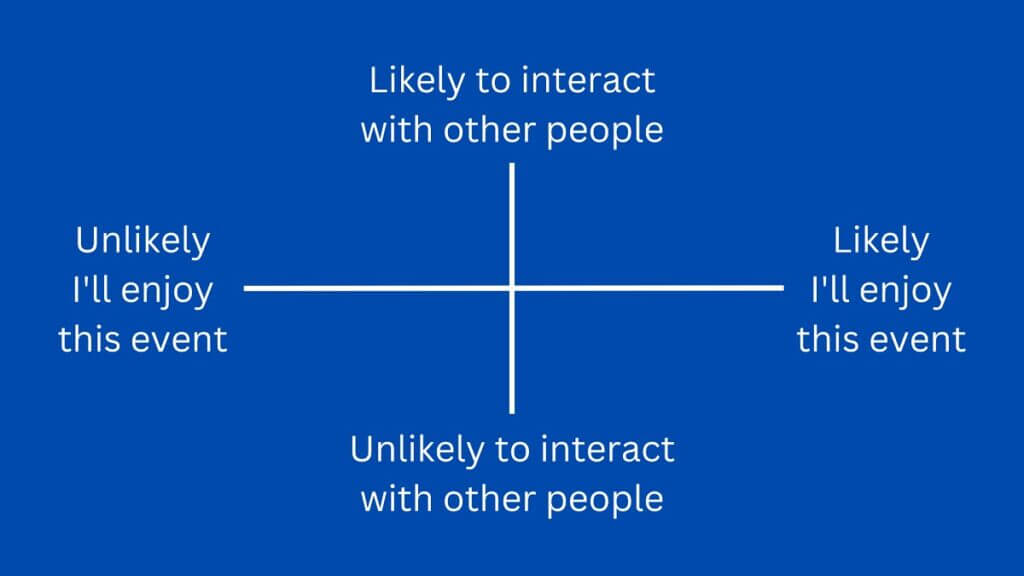
Ideally, everything that falls in the top right quadrant you’d say yes to. Commit to the goal and give yourself a deadline, to follow through.
- Get set up by friends and family
To get people to set you up on a date:
- Ask them to do it
- Tell them what you’re looking for
- Send your friend or family members some pictures
- Agree to go on dates
- Give your friends pictures
- Offer incentives for helping you out
To set up others:
- Look for single friends
- Think of a match and contact the person you know better
- Once that person says yes, contact the other person
- If the second person says no, let the first person know
- If both say yes, connect them
- Give them space
- Host parties
- Connect with people you know
- Introduce yourself to others when you go out
Chapter 10: This Is a Date, Not a Job Interview
The place where we make choices is important. This is also true for dates. If the context is wrong, you might not find the right person. The environment involves the place, what we do, and our mindset.
Don’t engage in evaluative dating, this is treating dating as if it was a job interview. So instead of asking and answering straightforward questions, engage in experiential dating where you treat dating with curiosity and take notice of what happens when you’re together.
Design better dates using these ten steps:
- Shift your mindset with a pre-date ritual. Stay positive by coming up with your own pre-date ritual. Put your phone in silent mode, listen to something you like, exercise, or take a bath. Do whatever puts you in a good mood.
- Choose the time and place of the date thoughtfully. Plan a date in the time slot you’re more relaxed, sit side by side, go on a walk, or try something different.
- Choose a creative activity. Do something fun with your date, go to an art gallery, play games, make cocktails, solve puzzles, cook together, roller-skate, dance, do karaoke, or go to an arcade.
- Show your work: make the date convenient for your date by choosing a palace near their home or work. Be thoughtful when picking the place.
- Play. Design a date that’s fun, make jokes, and laugh often
- Skip the small talk. Questions let us form a bond with others. Instead of coming up with boring questions, come up with thought-provoking ones. Alternatively, talk about things that close friends or lovers have. You can also try to ask for advice about something.
- Be interested, not interesting. Don’t make everything about you and don’t show off. Making the other person feel special involves being a good listener.
- Limit phone use. Just don’t use your phone during a date. It negatively impacts the quality of your conversation and it weakens your bond with the other person.
- End on a high note. People assess an experience based on the climax and the end.
- Use the post-date eight to ship to the experiential mindset.
This is the past-date eight:
- What side of me did they bring out?
- How did my body feel during the date?
- Do I feel more energized or de-energized than before the date?
- Is there something about them I’m curious about?
- Did they make me laugh?
- Did I feel heard?
- Did I feel attractive in their presence?
- Did I feel captivated, bored, or something in between?
Chapter 11: F**k the Spark
There’s no such thing as instant chemistry and the author proves this through a series of myths:
Myth #1: When you meet the right person, you feel a connection.
A connection is something you feel over time, not in an instant. The mere exposure effect says that the more we see something, the more we like it. When we first meet someone, we judge them on their mate value (something based on first impressions and overall attractiveness). As we get to know them, we find their unique value (who they truly are). The latter is more important but takes time.
Myth #2: The spark is always a good thing
You can turn initial excitement into a long-term relationship
Myth #3: If you have a spark, the relationship is viable
The spark can’t keep a relationship going for long. A sense of discomfort will eventually settle and the relationship will be over.
Chapter 12: Go On the Second Date
We have a tendency to focus on the negative, but override this impulse and you might find a great match. A negativity bias is a tendency to focus on bad features. On top of that, we use the fundamental attribution error to judge people, a tendency to accept that someone’s actions illustrate who they are. These generalizations are usually unfair.
So focus on the positive and make it a habit. One way to do this is by using defaults to your advantage. Defaults are preset options or rules that require no action and the best part about defaults is that you don’t waste mental energy on these decisions. Set a default that you’ll agree to all second dates unless something serious happens. Another rule should be not turning pet peeves into dealbreakers.
Finally, if someone wants to see you again after a date and you don’t, don’t ignore the person if they’re waiting for a response. It’s rude and insensitive.
Section 3: Getting Serious
Chapter 13: Decide, Don’t Slide
There are many points in our life with decision points: moments that stop an automatic behavior and give us the chance to make a conscious decision. Ideally, we’d use these moments to stop, reflect, and make an informed decision. But some relationship decision points are hard. Whenever a couple transitions to a new phase of their relationship, they can decide or slide. Deciding involves making an intentional choice (go exclusive, have children), and sliding is an unintentional choice. The former leads to higher-quality relationships.
All couples must have “the talk”, a discussion where they define their relationship. While awkward, this talk is about making sure that both people are on the same page. Another important decision point is moving in together because this tests the relationship. So for every relationship milestone, decide, don’t slide.
Chapter 14: Stop Hitching and Stop Ditching
Being in a relationship requires conscious decision-making and ending one is one of the most pivotal decisions. People who stay in a relationship that isn’t working are hitchers. On the other hand, ditchers are those who leave a relationship soon without giving it a chance to evolve. Ditchers end relationships too soon because of the transition rule, a cognitive error when we think we know how we’ll feel in the future taking into account the initial impact.
In romantic relationships, people confuse falling in love with being in love and they see this transition as a signal of disaster. The problem with ditchers is that they underestimate the cost of leaving and they end their relationship before learning how to be good partners.
Hitchers, on the other hand, struggle to leave relationships. The sunk-cost fallacy is what you feel when you invest in something and you want to see it through. In other words, hitchers force themselves to be in a relationship because they invested so much in it. Hitchers are affected by loss aversion, the phenomenon that makes losses seem larger than gains. If you found $100 on the street, you’d be happy, but if you lost $100 from your wallet instead, your pain will be greater. Both scenarios involve $100, but the feeling is different because of loss aversion. To adapt to it, we avoid losses. In the case of relationships, the potential loss of a mediocre partner is harder to swallow than finding a potentially great one. This is why we hold on to old times or mediocre relationships.
Remember that if you want to end a relationship, but can’t make a decision, you’re wasting your time and your partner’s.
Chapter 15: Make a Breakup Plan
Most people are afraid to end a relationship. If you’re committed to ending a relationship, but don’t know how to do it, you can follow the plan detailed below. Bear in mind that this plan is for people who aren’t married and don’t have kids.
- Step 1: Record your reasons for wanting to break up: write a letter to yourself
- Step 2: Make a plan: set a deadline, have the conversation somewhere private, and consider the timing. Don’t do it before a commitment, or a job interview, for example.
- Step 3: Create a social accountability system with a friend: you’re more likely to attain your goal of breaking up if you promise a friend you’ll call them after doing it.
- Step 4: have the conversation, but don’t have sex: breakup sex complicates things.
- Step 5: make an immediate post-breakup plan for yourself: this is about planning what happens after you break up. Visit someone, watch your favorite show, order food, or do something you like.
- Step 6: Create a breakup contract with your ex: don’t passively commit to breaking up, actively agree to do it and involve your ex in it.
- Step 7: Change your habits to avoid backsliding: replace old habits with new ones
- Step 8: Don’t be the “nice breakup person”: don’t stay around, and don’t call them on your birthday, for example.
Chapter 16: Reframe Your Breakup as a Gain, Not a Loss
To get over a breakup, use framing. In this case, that means seeing the breakup as a gain, rather than a loss and as something that will improve your life eventually.
- Reframe #1: Focus on the positives of the breakup. By thinking about the positive side of breaking up, you’ll feel happier, wiser, and more satisfied.
- Reframe #2: Focus on the negatives of the relationship. Accept that this is normal so that you can move on.
- Reframe #3: Rediscover yourself. Reconnect with all the hobbies you gave up on during the relationship
- Reframe #4: See this as a chance to learn from the past and make better decisions in the future. See the breakup as a learning opportunity.
Chapter 11: Before You Tie the Knot, Do This
The more you date someone before getting married, the better chances of staying together you have. The author recommends answering a series of questions and doing a series of self-reflecting activities to determine if getting married is the right thing to do. Then have a conversation with your partner about the past, present, and future. This also means discussing sensitive topics like money, sex, religion, and children.
Chapter 12: Intentional Love
Making a relationship last is one of the most difficult tasks. To have a fulfilling relationship, you must be responsive to change. Relationships are unpredictable and they evolve over time. Most people assume they’ll stay the same, but we never stop growing and changing. Our relationships are no exception. Consider writing a relationship contract, a document where you write a series of clauses where you agree on some rules. Reevaluate this contract once every few years if you have to. You can also create a check-in ritual where you discuss important topics regularly.
Intentional love is about making thoughtful and deliberate choices around your relationship. Just like you designed your life, you can design your relationship as well. Now that you know how, start living intentionally.

